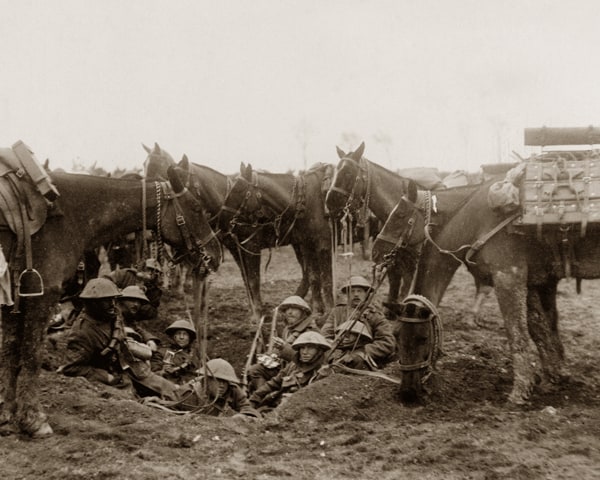Flers-Courcelette
A subsidiary attack of the Somme Offensive, the Battle of Flers-Courcelette was notable for the introduction of tanks. The attack was launched across a 12 km front from Rawlinson’s Fourth Army salient on 15 September. Twelve divisions were employed, along with all the tanks the British army possessed: 49. Sir Douglas Haig, the British Commander-in-Chief, had wanted many more tanks in readiness for the full launch of the Somme Offensive on 1 July, but nevertheless determined to proceed with the Flers-Courcelette attack with this reduced number – a somewhat controversial decision, it having been argued that the tanks would be of little practical use in such small numbers.
The Honour was awarded to the 8th Hussars.
Detail
The Second Battle of Ypres was famous for the use of a new illegitimate weapon of warfare, poison gas, and the Battle of Flers-Courcelette was no less famous for the use of a new legitimate weapon, the tank.
For the first time in the annuals of war forty-two tanks were employed, and they performed useful work. “Creeping,” and “rolling,” barrage was also used as an attacking barrage by the 15th Corps in the attack on Flers. The bombardment has lasted for three days, and at 6 am on the 15th it rose to its height.
The final twenty minutes of intense fire, slowly creeping forward with infantry close under its shadow, pinned the Germans to their positions.
Naturally, the methodical advance of the forty-two tanks startled them with all the sense of mystery that the unknown inspires. The element of surprise in the first employment of the tanks was every bit as apparent as the same element in the first employment of gas.
The regiment saddled up at 11 am on the 15th and remained so till 5 pm when orders were received to move as 9 am the next day. Major Mort went to the Brigade for liaison duty, and Second-Lieutenants Knight and Armstrong acted as gallopers to the Brigade on the 15th.
The squadrons on the 16th were told to hold themselves in readiness to proceed at short notice.
With 4 men Lieutenant Hornby was sent to reconnoitre in the vicinity of Gudecourt. At midnight orders were received to proceed westwards at 6 am. Orders came at 5.45 am to march back to Bussy via Morlancourt.
On the 19th Private Howes died from the wounds he received on the 16th.


